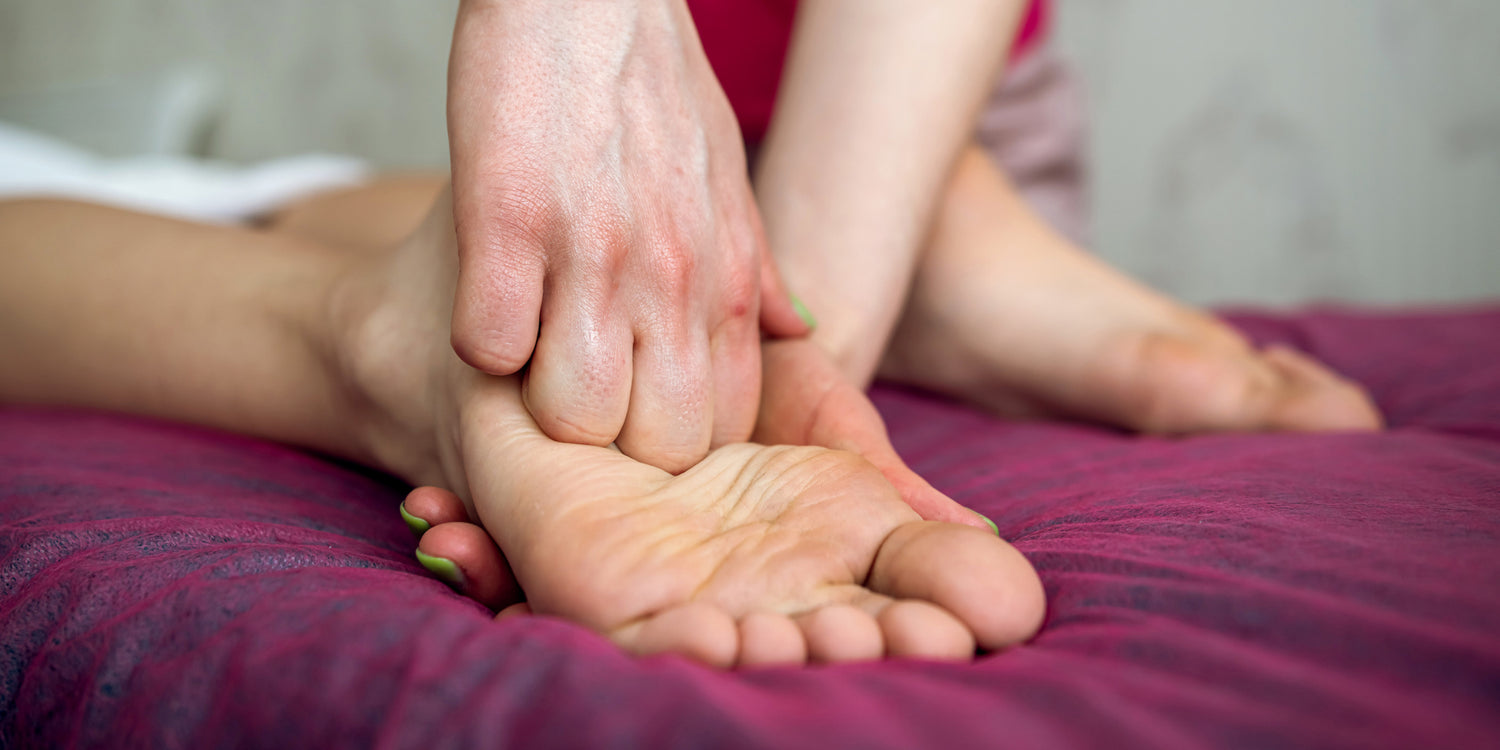In the fast-paced world of athletics, where milliseconds and split-second decisions can make all the difference, athletes are constantly seeking ways to gain that competitive edge. While rigorous training, proper nutrition, and advanced sports science techniques play vital roles in enhancing performance, there is a lesser-known secret weapon that athletes are increasingly turning to: reflexology.
Reflexology, an ancient healing practice that focuses on stimulating specific points on the feet, hands, and ears to promote overall well-being, has caught the attention of athletes and sports enthusiasts alike. By harnessing the power of reflexology, athletes are discovering a natural and holistic approach to unlocking their peak performance potential.
From improving physical stamina and mental focus to accelerating recovery and preventing injuries, this practice has the potential to revolutionize the way athletes prepare, perform, and recuperate. So, lace up your shoes and let’s uncover the remarkable advantages of reflexology for athletes.
What Is Peak Performance in Athletes?

Peak performance in athletes refers to the optimal level of physical and mental performance that an athlete can achieve during their competitive endeavors. It is the state at which an athlete performs at their best, both physically and mentally. For athletes, reaching peak performance requires a harmonious combination of physical and mental preparation.
Physically, peak performance means achieving the highest level of muscle function. Athletes need to have well-trained muscles that can perform at their maximum capacity, allowing them to exert force and execute movements efficiently. Additionally, peak performance involves reducing fatigue, which means athletes can sustain their physical output for a more extended period without experiencing a decline in performance. It also encompasses enhanced endurance, enabling athletes to maintain their performance levels over a prolonged period.
Mentally, peak performance involves being in the right state of mind. Athletes must be focused, motivated, and psychologically prepared to face the challenges of competition. This mental state ensures that they perform to the best of their abilities and make wise decisions during critical moments.
Achieving peak performance is of utmost importance for athletes as it directly impacts their ability to excel and succeed in their respective sports disciplines. The benefits of reaching peak performance include improved muscle function, allowing athletes to perform their skills with greater efficiency and effectiveness. Moreover, reduced fatigue enables them to sustain their performance levels for longer durations, increasing their chances of success. Additionally, enhanced endurance allows athletes to compete at high-intensity levels without succumbing to exhaustion, ultimately leading to better results.
What Is the Connection Between Reflexology and Athletic Performance?

Reflexology is an alternative therapy that involves applying pressure to specific points on the feet, hands, or ears, which are believed to correspond to different organs and body systems. While reflexology is commonly associated with relaxation and stress relief, it also has several benefits that can directly impact athletic performance.
One of the key connections between reflexology and athletic performance is its ability to aid in sports injury recovery. By applying pressure to specific reflex points, reflexologists can stimulate blood flow and promote healing. This increased circulation helps to transport nutrients and oxygen to injured tissues, speeding up the recovery process and reducing pain and inflammation.
Furthermore, reflexology can enhance overall circulation and blood flow, even in the absence of injury. Improved circulation ensures that muscles receive an adequate amount of oxygen and nutrients during physical activity, increasing endurance and preventing fatigue. This is particularly beneficial for athletes as it can boost their performance and help them reach their full potential.
Additionally, reflexology has the potential to reduce inflammation, which is a common issue in athletic activities. The pressure applied during a reflexology session helps to reduce the production of inflammatory substances, leading to decreased swelling and pain. As a result, athletes can recover faster from intense workouts or injuries, allowing them to continue their training without any setbacks.
Moreover, reflexology promotes relaxation, which is crucial for athletes in managing stress and anxiety. By activating the parasympathetic nervous system, reflexology induces a state of deep relaxation and helps athletes calm their minds, reduce muscle tension, and improve sleep quality. This allows for better focus, concentration, and overall well-being, both on and off the field.
How Does Reflexology Works in the Body?
When specific points on the feet, hands, or ears are stimulated, nerve impulses are sent to the corresponding organs and systems in the body. This activates the body's self-healing mechanisms, promoting relaxation, reducing tension, and improving circulation. The pressure applied to the reflex points helps to unblock and balance the body's energy pathways, known as meridians, allowing for improved overall well-being.
Reflexology works on the principle that each organ and system in the body is connected to a specific reflex point on the feet, hands, or ears. For example, the tip of the big toe corresponds to the head, while the arch of the foot corresponds to the digestive system. By stimulating these points, reflexologists believe that it can help restore proper functioning to the associated organs and systems.
Applying pressure to these reflex points not only aims to alleviate specific symptoms or conditions but also encourages the body to return to a state of balance and promote overall healing. By stimulating the reflex points, reflexology helps to improve the flow of energy throughout the body, allowing for optimal functioning and well-being.
5 Common Illnesses and Conditions Addressed by Reflexology

Reflexology, a therapeutic practice that involves stimulating specific points on the feet, hands, and ears, can effectively address a variety of common illnesses and conditions. Here are five of the most common ailments that can be relieved through reflexology:
- Headaches and Migraines: By targeting reflex points corresponding to the head and neck, reflexology can help reduce the intensity and frequency of headaches and migraines.
- Digestive Disorders: Reflexology techniques applied to specific points on the feet can aid in the management of digestive disorders such as constipation, bloating, and irritable bowel syndrome (IBS).
- Pain and Musculoskeletal Conditions: Reflexology can alleviate symptoms associated with pain and musculoskeletal conditions like arthritis, back pain, and plantar fasciitis. By promoting relaxation and improved blood circulation, reflexology helps to reduce inflammation and relieve discomfort.
- Hormonal Imbalances: Reflexology can be an effective complementary therapy for addressing hormonal imbalances, including symptoms of menopause, premenstrual syndrome (PMS), and infertility. By stimulating reflex points associated with the endocrine system, reflexology helps to restore balance.
- Insomnia: Reflexology can aid in managing sleep-related issues, such as insomnia, by promoting relaxation and reducing stress and anxiety levels. The practice helps to regulate sleep patterns and improve overall sleep quality.
Takeaway
Reflexology has emerged as a secret weapon for athletes seeking a competitive edge in the fast-paced world of athletics. By stimulating specific points on the feet, hands, and ears, this ancient healing practice offers a natural and holistic approach to unlocking peak performance. It improves physical stamina, mental focus, accelerates recovery, and prevents injuries. Reflexology achieves these benefits by enhancing circulation, reducing inflammation, and promoting relaxation, thereby reducing stress and anxiety levels.
The connection between reflexology and athletic performance lies in its ability to aid in sports injury recovery, improve overall circulation and blood flow, reduce inflammation, and promote relaxation. By targeting specific reflex points, athletes can tap into the body's self-healing mechanisms and restore balance. Reflexology not only addresses common ailments such as headaches, digestive disorders, pain, hormonal imbalances, and insomnia but also contributes to athletes' overall well-being. With its natural and non-invasive nature, reflexology offers athletes a powerful tool to optimize their physical and mental capabilities, ultimately unlocking their peak performance potential.
Renpho Health Tips
-

RENPHO Social Media Roundup: Mother's Day Edition
April 29, 2024
Read more >
-

RENPHO Viral Social Media Roundup: #RENPHOspring (April 2024)
April 29, 2024
Read more >
-

Cultivating a Personalized Approach to Well-being Beyond the Comparison Game
April 24, 2024
Read more >
-

Happy Feet, Healthy Steps: How Regular Massage Can Help Prevent Foot Injuries
April 19, 2024
Read more >
-

Easing the Path to Motherhood: How Reflexology Can Help Expectant Mothers
April 8, 2024
Read more >



































